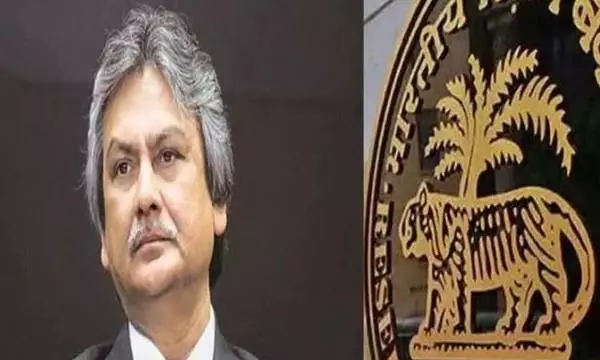Inflation to Stabilise at 4% by FY26: RBI Dy Governor Patra

Mumbai: India’s retail inflation is projected to average 4.5 per cent in 2024-25 and align with the 4 per cent target on a durable basis by 2025-26 said Michael D Patra, Deputy Governor, Reserve Bank of India (RBI) at a conference.
Speaking at the High-Level Conference on “Central Banking at Crossroads” in New Delhi on Monday (the speech was published on the RBI website on Tuesday), Patra said, “In July and August 2024, inflation has fallen below the target. It is projected to average 4.5 per cent in 2024-25 before aligning with the target on a durable basis in 2025-26.”
The Consumer Price Index (CPI) based inflation rose to a nine-month high of 5.5 per cent in September from 3.7 per cent in August. Food inflation has surged to 9.2 per cent from 5.7 per cent, partly due to an adverse base. Vegetables and edible oils were the key drivers of higher food inflation.
Patra said that the Indian experience is unique in view of the incidence of repetitive shocks to food and fuel prices, which challenged the conduct of monetary policy.
In India, price stability is a shared responsibility under which the government sets the target, and the central bank achieves it. This allows monetary-fiscal coordination without posing risks to financial stability, fiscal consolidation or growth - perhaps a template for countries vulnerable to inflationary pressures emanating from supply shocks.
India’s flexible inflation targeting (FIT) framework is centered around an inflation target set at 4 per cent with a tolerance band of +/– 2 per cent around it. The target is medium-term in nature, initially set for a five-year period (2016-21) and renewed by the government for another five years (2021-26).
Speaking about the inflation trajectory over the years, Patra said that during the pre-pandemic period upto end-2019, inflation was low and stable, averaging around 4 per cent. With the outbreak of the pandemic and associated lockdowns, inflation breached the upper tolerance band in many months during 2020–21 and 2021-22. Following the Russia-Ukraine conflict, inflation again veered away from its target under the impact of multiple and overlapping food and energy shocks. By April 2022, it reached a peak of 7.8 per cent.
The monetary policy response was front-loaded with a cumulative hike of 250 bps during May 2022-February 2023. In July and August 2024, inflation has fallen below the target.
Patra also said that in the years ahead, the conduct of inflation targeting (IT) - based monetary policy may face even greater challenges. He said that central banks face an existential threat to their central mandates from climate change through supply shocks such as food and energy shortages and a decline in productive capacity which can translate to inflation volatility. The deputy governor suggested that while formulating monetary policy, it is considered good housekeeping to evaluate the balance of risks.

